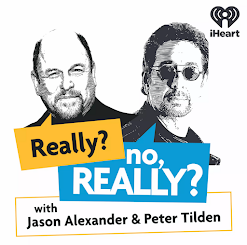Today I lurked on a Google Hangout. It worked amazingly - OK there were a couple of glitches (getting booted out but really quick to get back in again) but I was amazed at several aspects of it. Whenever someone spoke the camera switched to them - I didn't know it did this, having two windows open (the camera image and presentation slides) worked very well for the viewer (although a bit fiddly for the presenter) and when finished the completed recording was on Google's site within minutes. Impressive.
I think you'll have to go here to see the video though, I suspect it's not possible to 'embed' a Google Hangout in a blog but I may be wrong (if you know please tell me).
Google in Education: Paul Curzon on 'Inspiring students about computing'
Background information
cs4fn (Computer Science for fun) is the name of the project.
The text below is just lifted from what I wrote about it on the Google pages, with better links.
Today my boss Paul Curzon talked about sharing stories to get across ideas of how to get school children thinking about
computation and human factors in computer science teaching. He used
examples of "I'm thinking of someone, can you guess who it is?" and the types of questions you'd need to ask to work it out.
It
wouldn't help to keep asking "Is it A?", "Is it B?" as you'd be asking
questions forever. Instead it's better to ask 'halving' questions that
reduce, with each question, the number of possibles. So "are they still
alive?" or "is it a man or a woman?" are good questions to ask.
He
gave the example of strategies used by the author of the Diving Bell
and the Butterfly (the author, Jean-Dominique Bauby, had locked-in
syndrome after a stroke and could only communicate by blinking an eye)
and his writing assistant to make transcribing his thoughts easier.
Rather than having to blink once when the relevant letter was read (a,
b, c, d, e, f, g [blink] = g) they used the frequency of letters in the
language to speed up his dictation.
There are other strategies too, eg ask someone to blink if the letter is in the first half of the alphabet, then 'halve' again.
It's
not just about algorithms of course. It's easy to design a system that
does something well but it's important to remember the people who are going to be using it... (nb: wikipedia link)
I really enjoyed hearing my boss tell
stories and I also enjoyed the bit setting things up before. We realised
that the webcam was particularly sensitive to the 50Hz flicker of tube
lighting so went off to source some 'red head' lights which have a nice
warm light. It turns out that we have, at QMUL, the most amazing
resources for filming - thanks to Richard Kelly for helping us with
tripods and whatnot. And thanks to Google for setting this up in the
first place and Jonathan B for roping me in for some geeky fun :)
The
slight irony is that I couldn't participate in the Google Hangout
myself because it would have caused interference and confusion, and I
won't be able to join in much on tomorrow's one either (more coming on
that) because I have the official role of Camera Op Two. It really means
holding the webcam steady but I am rather looking forward to it...
Tuesday, 20 November 2012
Subscribe to:
Post Comments (Atom)





No comments:
Post a Comment
Comment policy: I enthusiastically welcome corrections and I entertain polite disagreement ;) Because of the nature of this blog it attracts a LOT - 5 a day at the moment - of spam comments (I write about spam practices,misleading marketing and unevidenced quackery) and so I'm more likely to post a pasted version of your comment, removing any hyperlinks.
Comments written in ALL CAPS LOCK will be deleted and I won't publish any pro-homeopathy comments, that ship has sailed I'm afraid (it's nonsense).